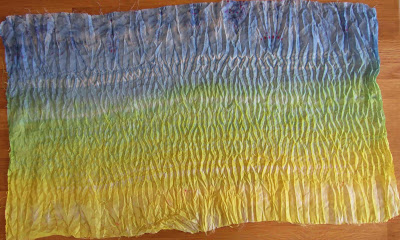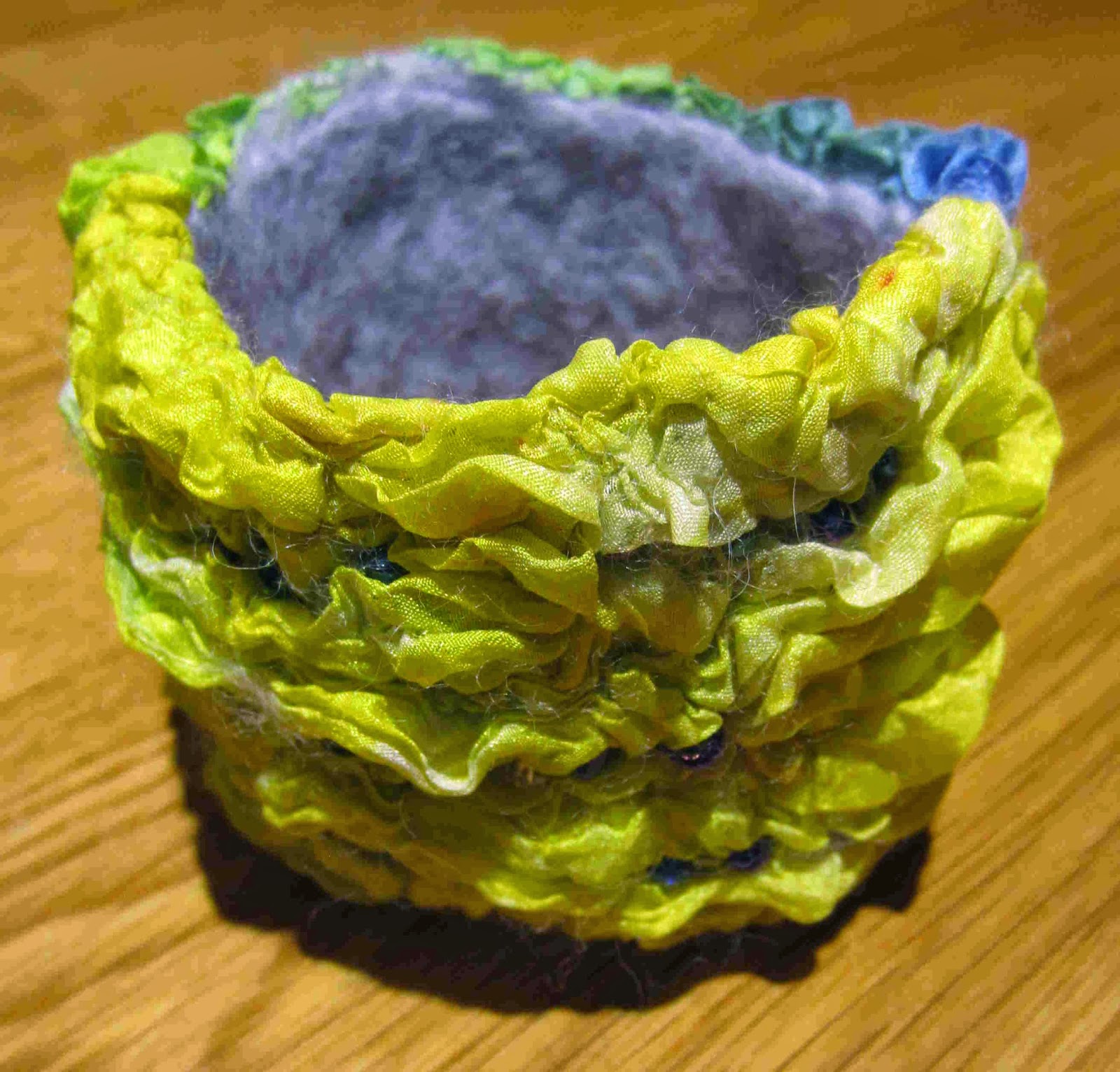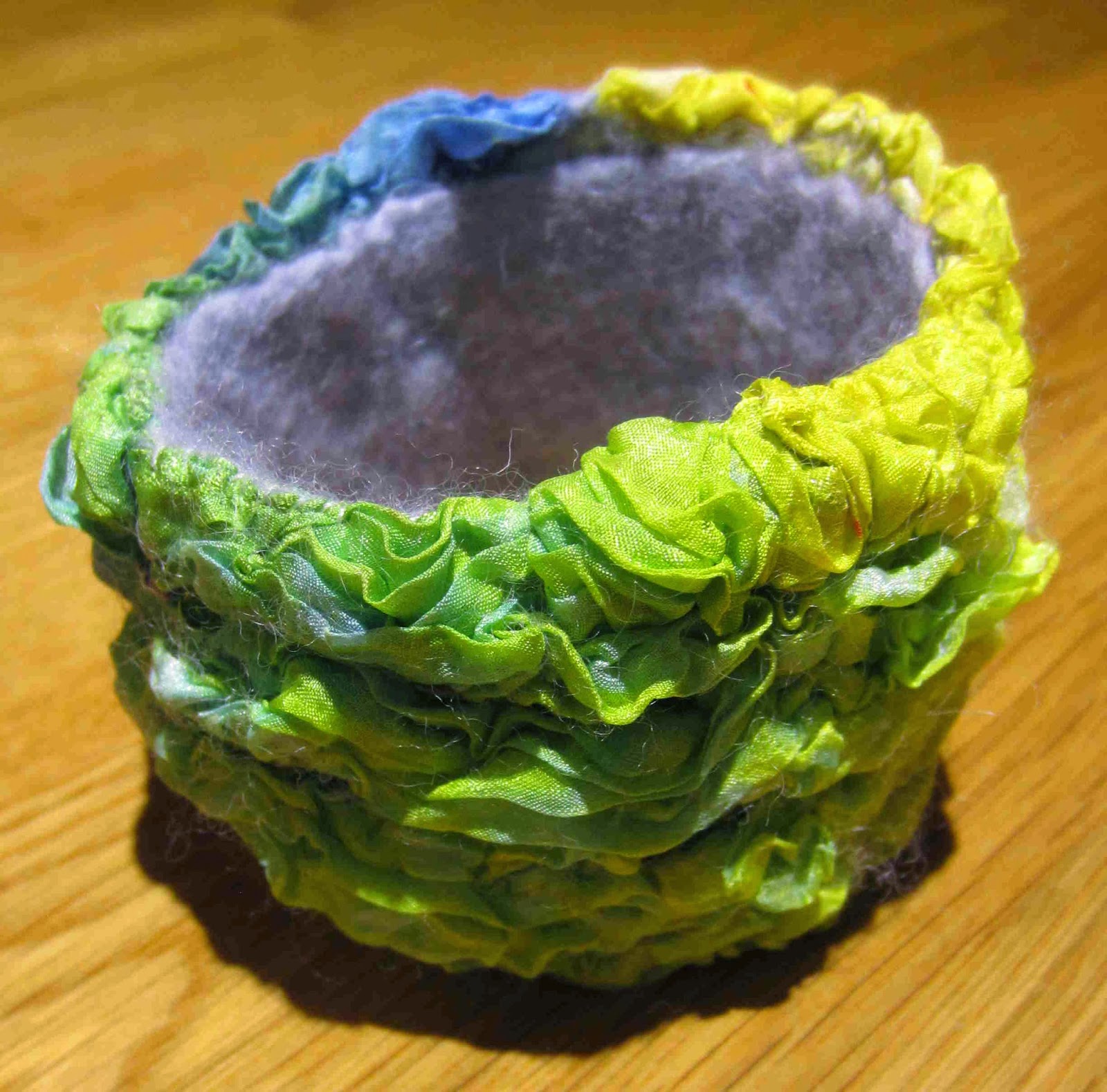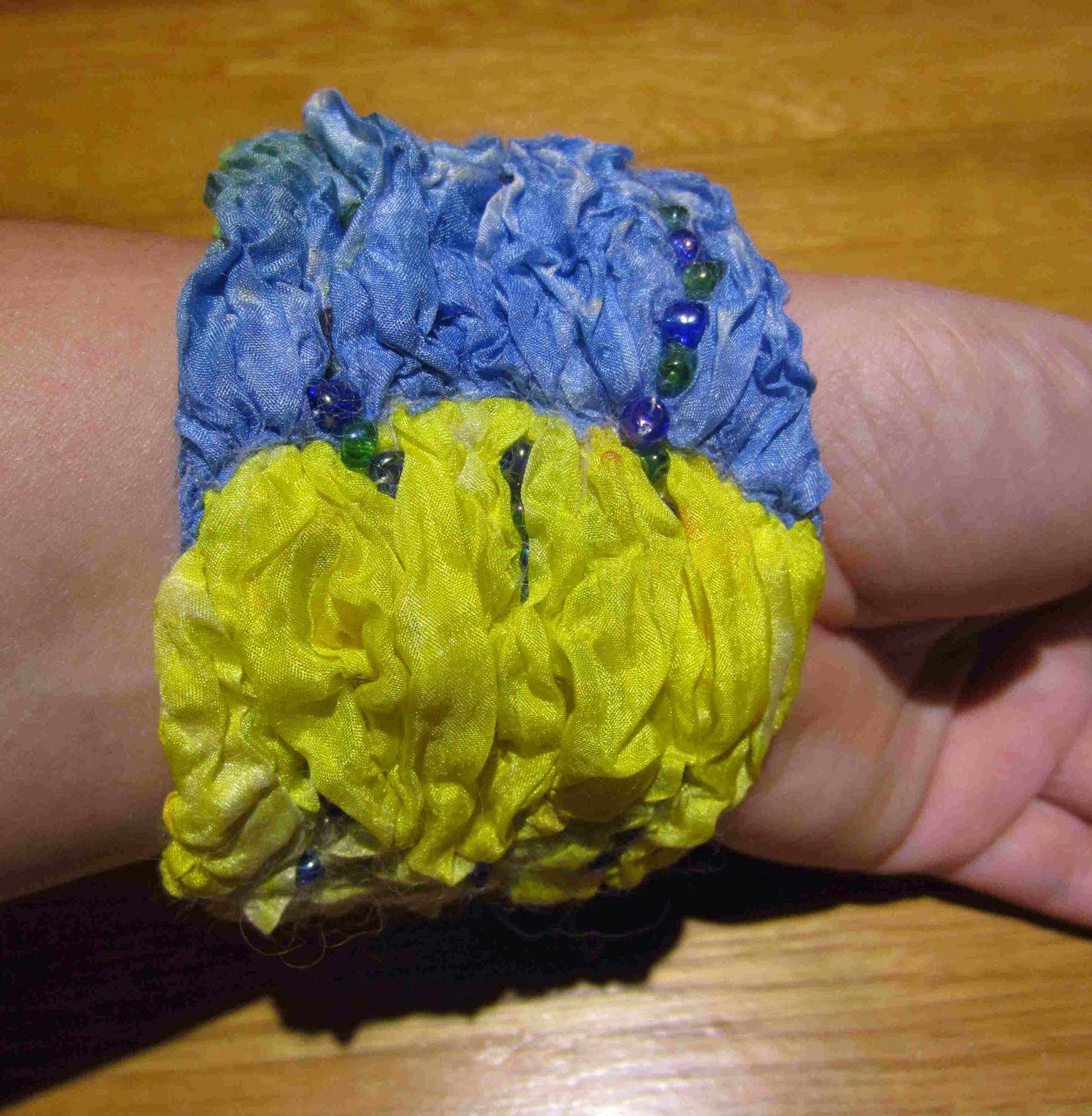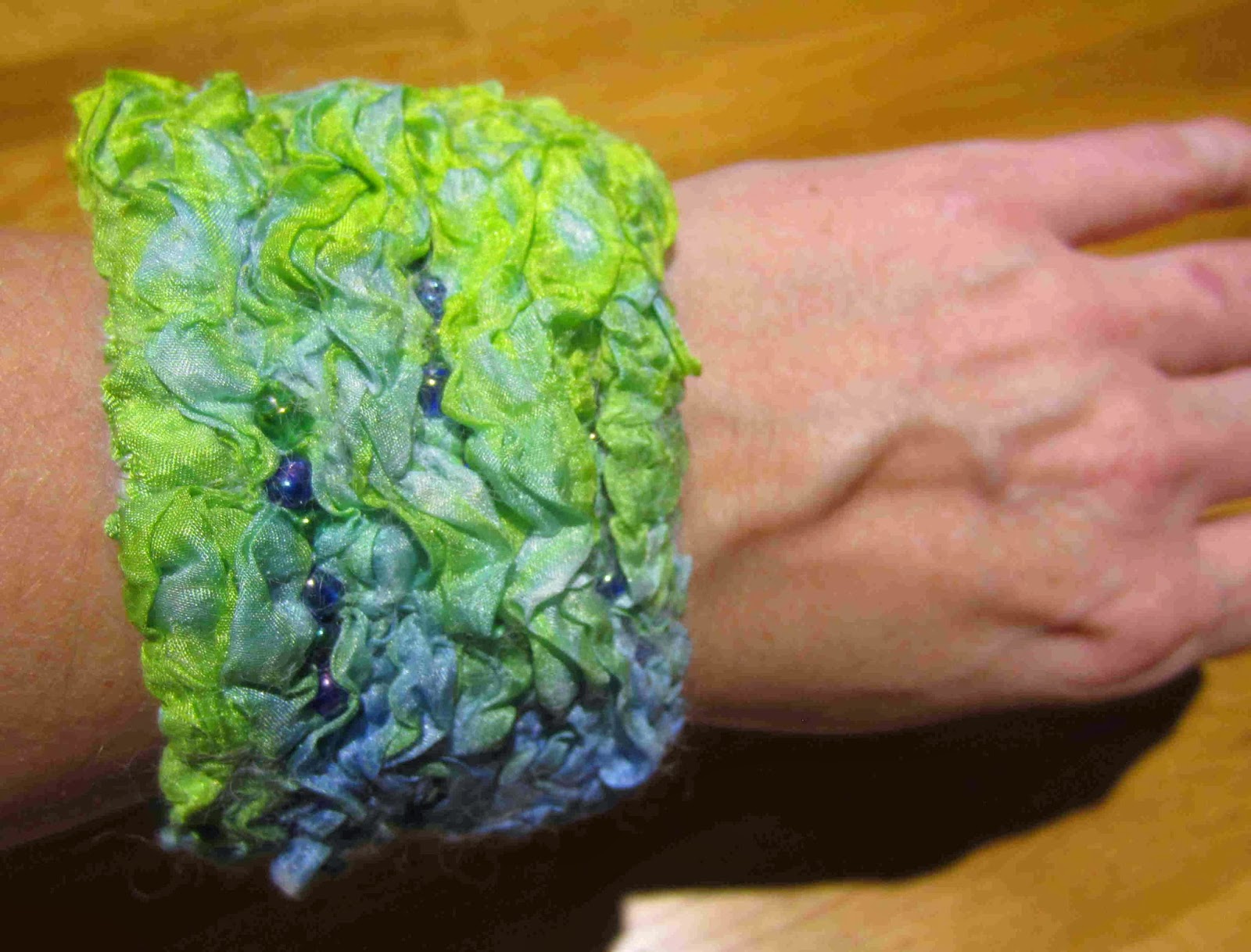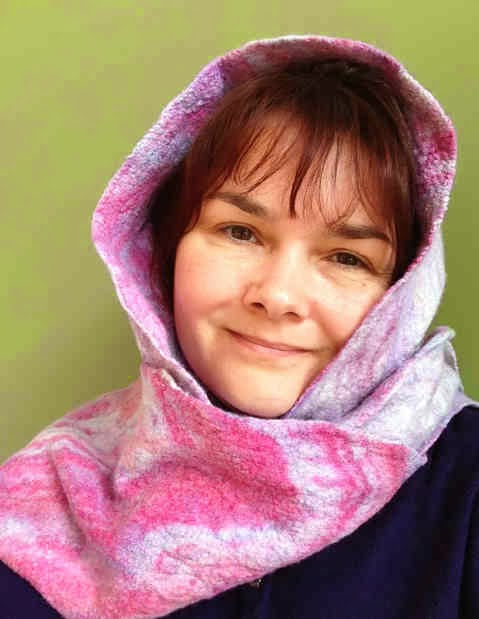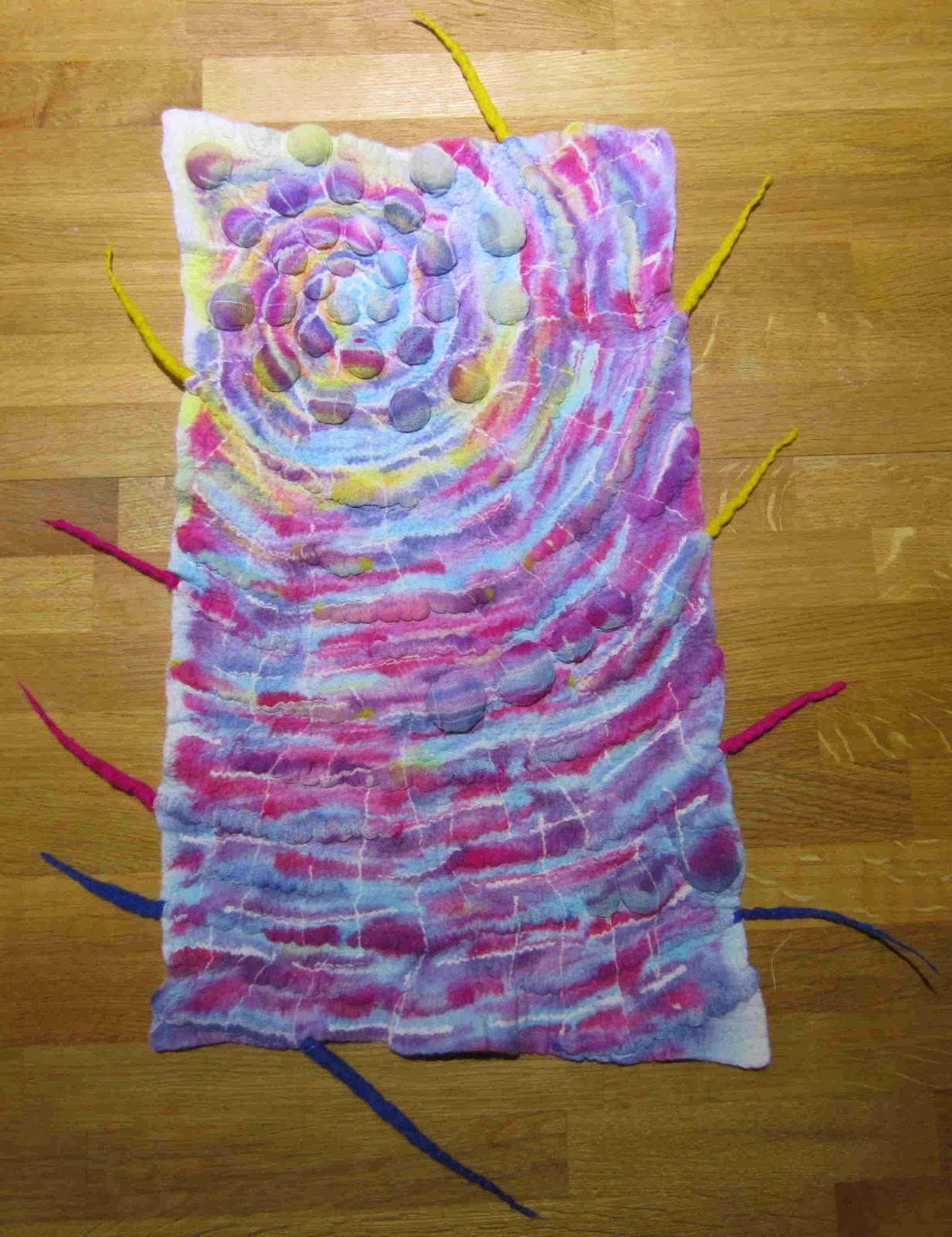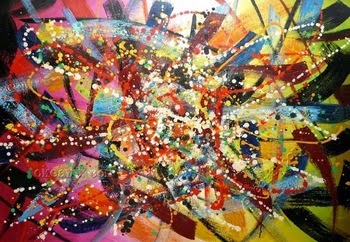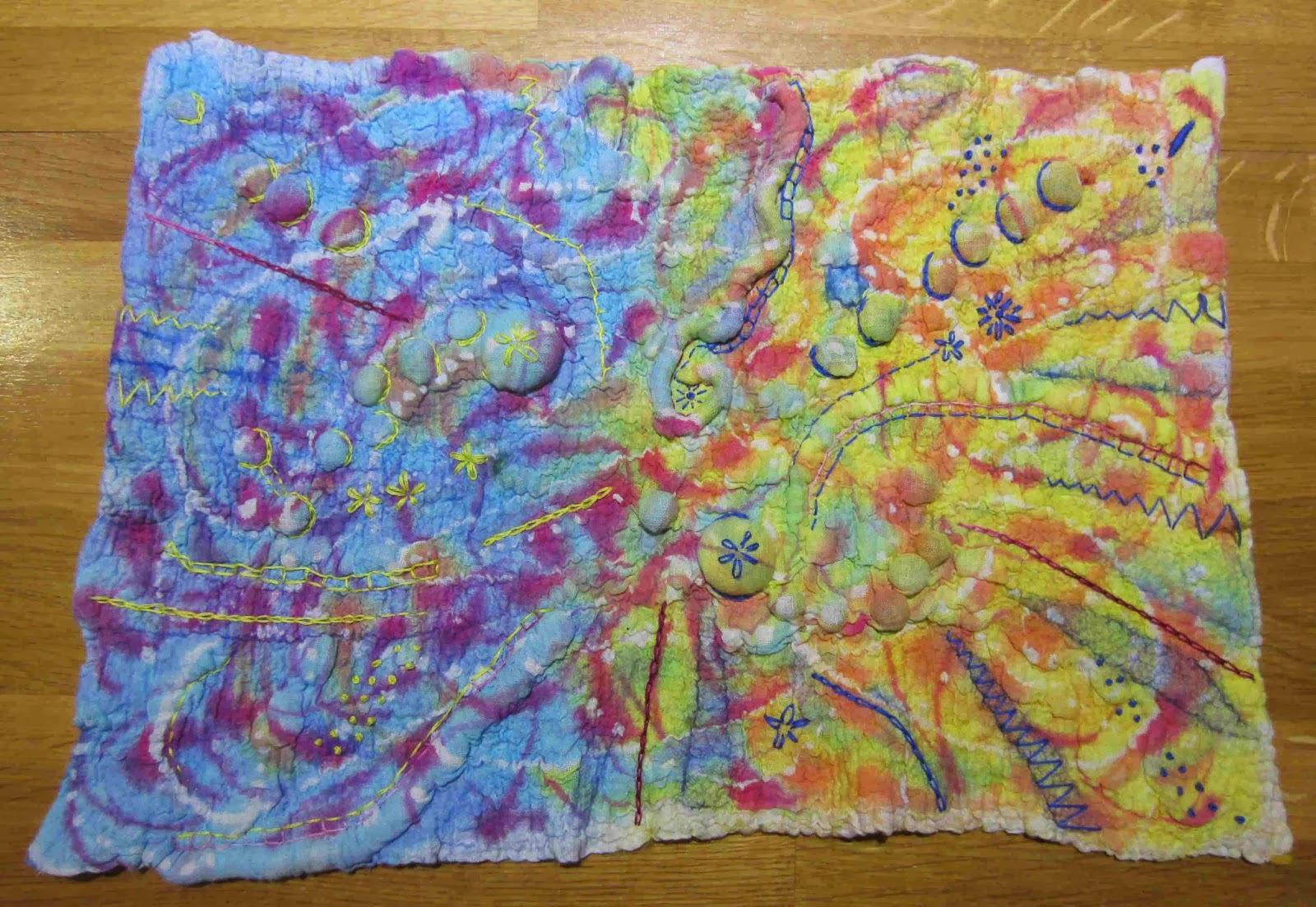Have you ever done one of those personality tests? Myers-Briggs, Insights and others? I have completed more of these things than I care to remember but one of the earliest ones labelled me a “completer-finisher”, apparently I am driven to complete tasks which is probably fairly accurate. I get anxious if there’s a deadline I can’t comfortably reach ahead of schedule. This is probably why I am feeling a sense of accomplishment and inner calm today. I have finished 3 projects in the last few of days…
Reversible hooded scarf, this has been a lot of fun to make and now I have worked out an improved pattern I will definitely be making more of these.
A textured laminate piece for my C&G course. This piece I have titled, “Eye of the Storm” as it was based on da Vinci’s “Deluge” drawings. I am still toying with the idea of using fibre etch to reveal some of the coloured cords and adding some embroidery so maybe this one isn’t quite finished yet….?
And my Q1 challenge piece, which was inspired by this painting by Jackson Pollock.
I still can’t decide which way is “up” for this piece…
